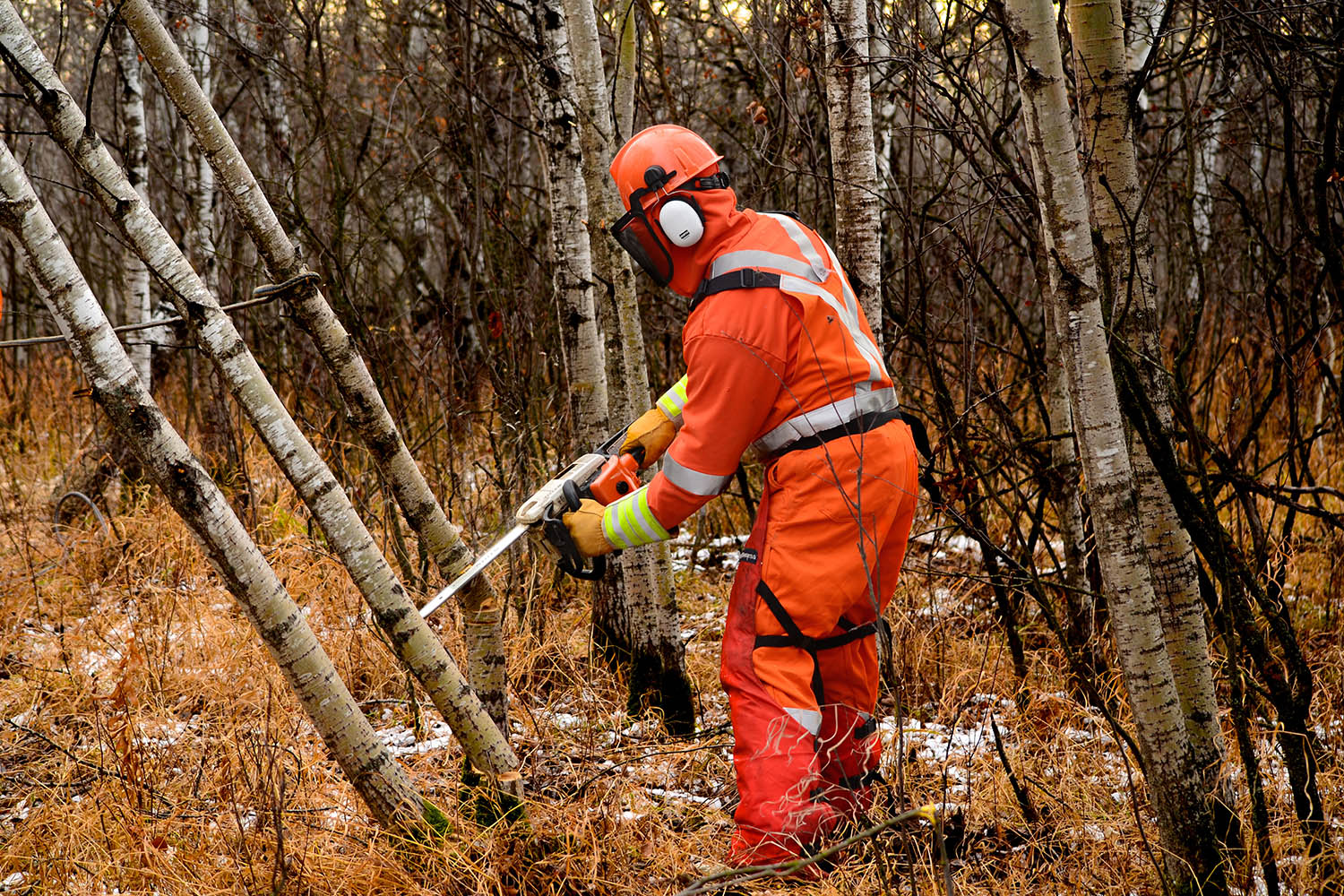Provided courtesy of North American Training Solutions
Modern tree care operations expose workers to hazardous environments. Proper selection, inspection and use of PPE is a key factor in preventing injury and lengthening careers. PPE is the worker’s first line of defense on the job and should always be used and maintained. Today’s article will look briefly at selection and inspection of proper PPE for tree care workers engaged in ground operations.

Head protection is vital in the vertical, gravity-influenced world of tree care. A properly rated helmet should fit snugly but comfortably and stay on the head as the worker looks up. Chin straps are great and very nonintrusive with modern helmets. Inspect helmets by checking for cracks or splits in the shell. A class “C” rated helmet should not have holes or metal hardware coming through the shell. Other helmets should not have holes that the manufacturer did not put there. The suspension must be functional and intact.
Hearing protection, whether in the form of muffs or plugs, should fit well, be clean and be rated for the appropriate noise level. Keep it readily available.
Eye protection should be marked as Z87 rated. The lens color should allow for clear viewing while working. Store lenses carefully to prevent scratches; scratches hinder vision and may cause structural weakness. Most importantly eye protection must be worn at all times!
Gloves are a great idea. If chipping brush, do not use gauntlet style. These may become snagged. When handling rigging lines, a solid pair of leather gloves helps control lowering lines.
Leg chainsaw PPE is required for all ground-based saw operation. Chaps or pants should fit and cover the top of the foot. All buckles should function and be in use. Inspect for pulled fibers and rips and tears. The shells can be stitched closed, but do not include the inner fibers. Pulls of the protective material greater than one inch make the protection suspect. Make sure to store and regularly clean chaps as dirty chaps may not be as effective.
PPE use and selection on the jobsite is a huge step toward safety and efficiency. Use it and engage your most important piece of protective equipment — your brain!
This article contains opinions expressed by third parties and does not necessarily reflect the opinions of Vermeer Corporation, its dealers or its affiliates. Always consult machine manuals and safety standards prior to operating equipment.
